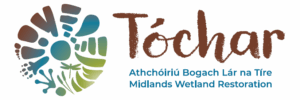Pollardstown Fen
Pollardstown Fen is the largest remaining spring-fed fen in Ireland and is a very important wetland site both nationally and internationally. It is a post-glacial fen which began to develop approximately 10000 years ago when a large lake covered the area. Over time, this lake became filled with dead vegetation, accumulating and eventually turning into fen peat. The calcium-rich water found here prevented the usual change from fen to raised bog and continues to prevent this process today. The fen provides the water for the feeder to the Grand Canal, an important navigational waterway for the larger region.
Nature at Pollardstown
The site is a Special Area of Conservation (SAC) selected due to the presence of internationally important habitats and species. The fen is largely composed of reedbeds, freshwater pools with patches of scrubland. It contains a number of rare vegetation types, including petrifying (tufa) springs and invertebrates including the rare snail species Vertigo. The damp pastures on wet mineral soils on the fen margins host good displays of orchids. Many rare plant species are present such as Narrow-leaved Marsh Orchid, Slender Sedge, Marsh Helleborine and Shining Sickle Moss and the rare arctic-alpine moss Homalothecium Nitens.
The fen is also an important site for both breeding and wintering birds. Little Grebe, Coot, Moorhen, Teal, Mallard, Mute Swan, Water Rail, Snipe, Sedge Warbler and Reed Bunting all breed annually within the fen vegetation. Reed Warbler and Garganey, both rare breeding species in Ireland, have been recorded at Pollardstown and may have bred. In recent years two specialised bird species associated with fens, Marsh Harrier and Savi’s Warbler, have been seen at Pollardstown.
Tóchar and Pollardstown
Tóchar is working with our colleagues in NPWS on a number of projects on the Fen. Key is the development of a restoration plan which will collate the vast amount of research on the Pollardstown fen and carry out further research to fill in any gaps. This information will then be used to develop a restoration plan with measures for the various zones of the site including the fen habitats, Rathbride woodland, and surrounding wetland margins.
Although the focus of the restoration plan is on fen habitats, it is anticipated that restoration measures will also benefit other wetland habitats, important species and contribute to socioeconomic benefits for the local community, improvements to biodiversity and reduced carbon emissions.
In order to determine the climate related aspects, a greenhouse gas flux tower will be installed to assess the how the fen interacts with the atmosphere in relation to these emissions. Tóchar is also facilitating the removal of the damaged boardwalk and its’ replacement to ensure that the local community and visitors can safely access and enjoy this wonderful site.
